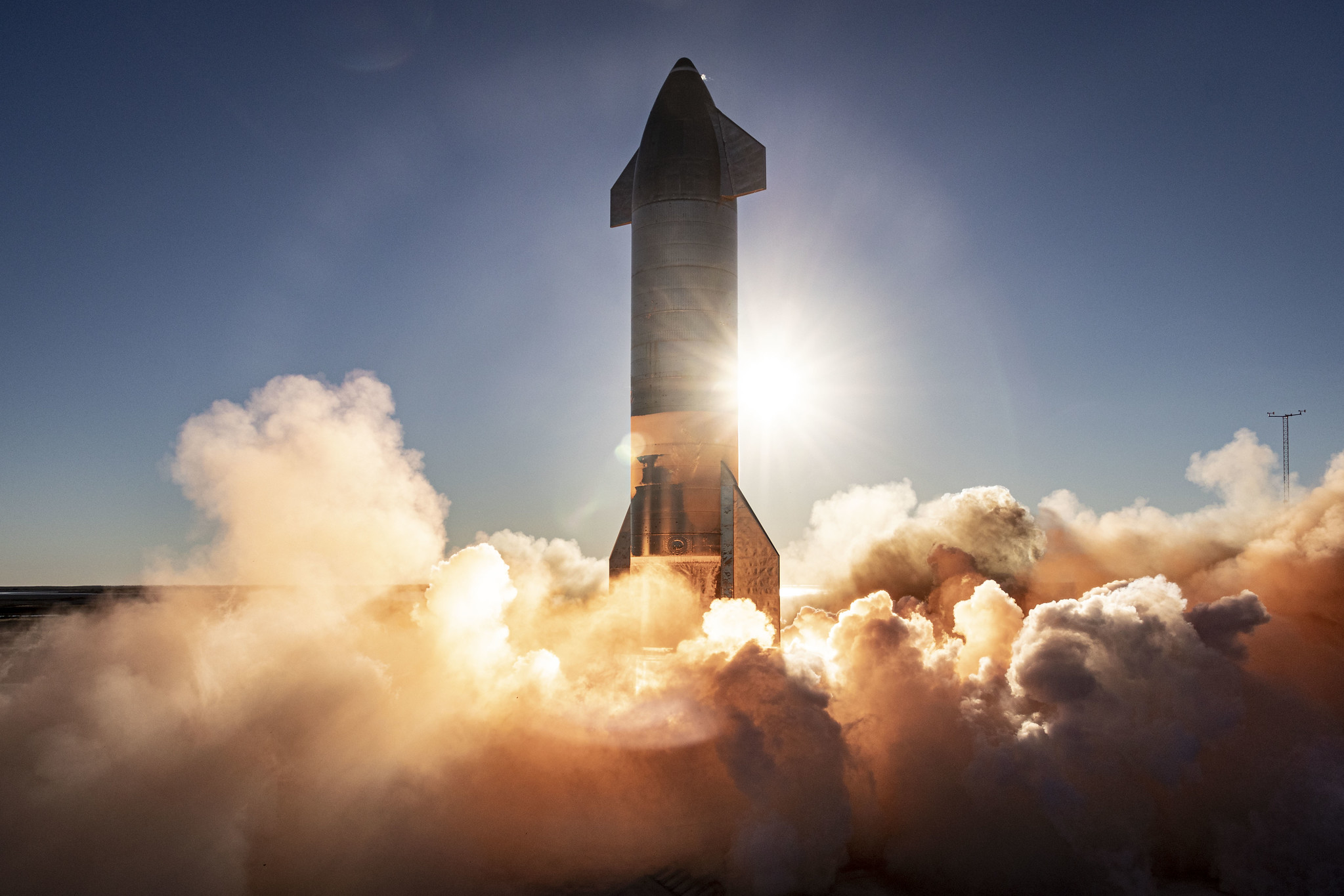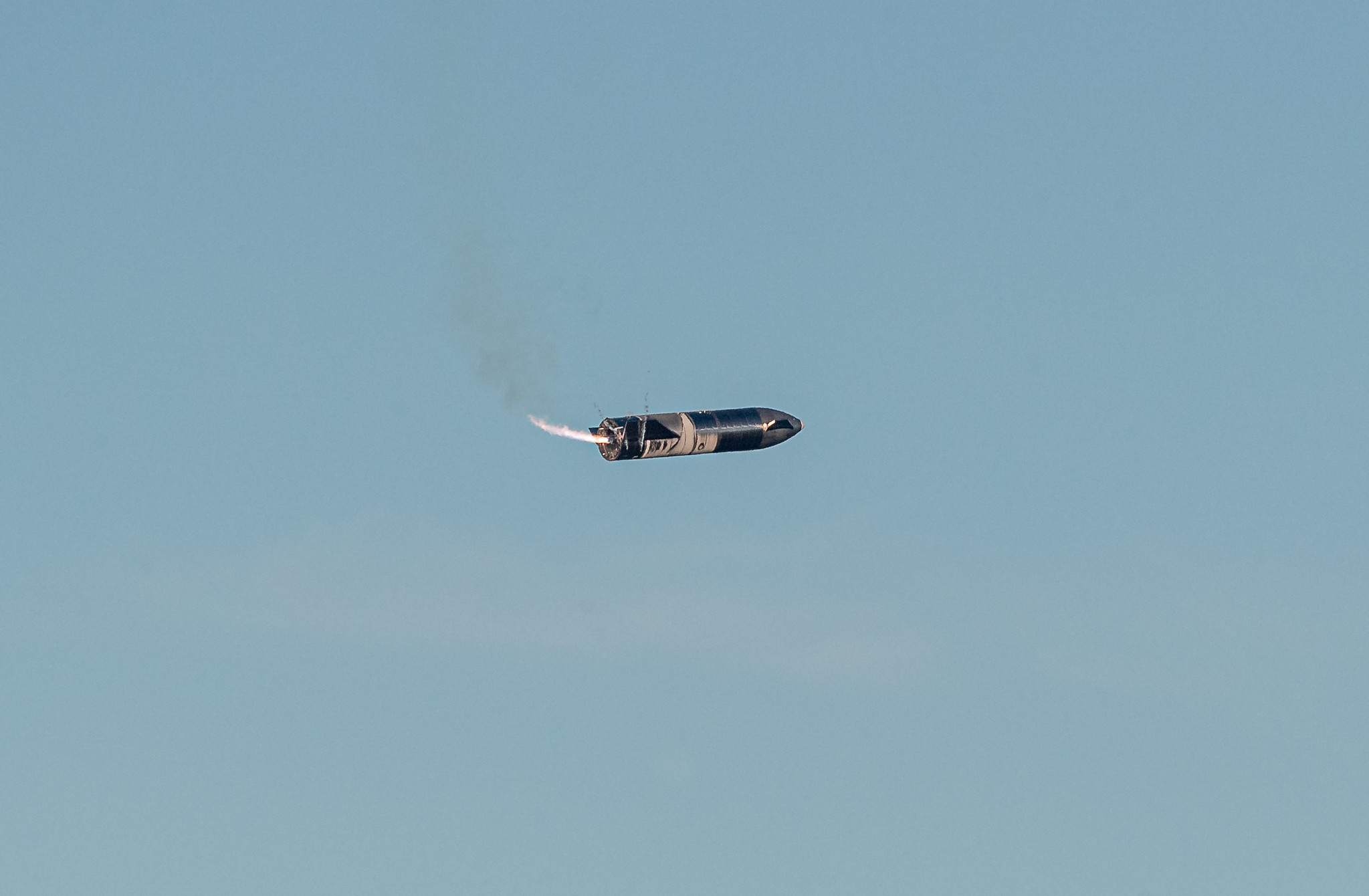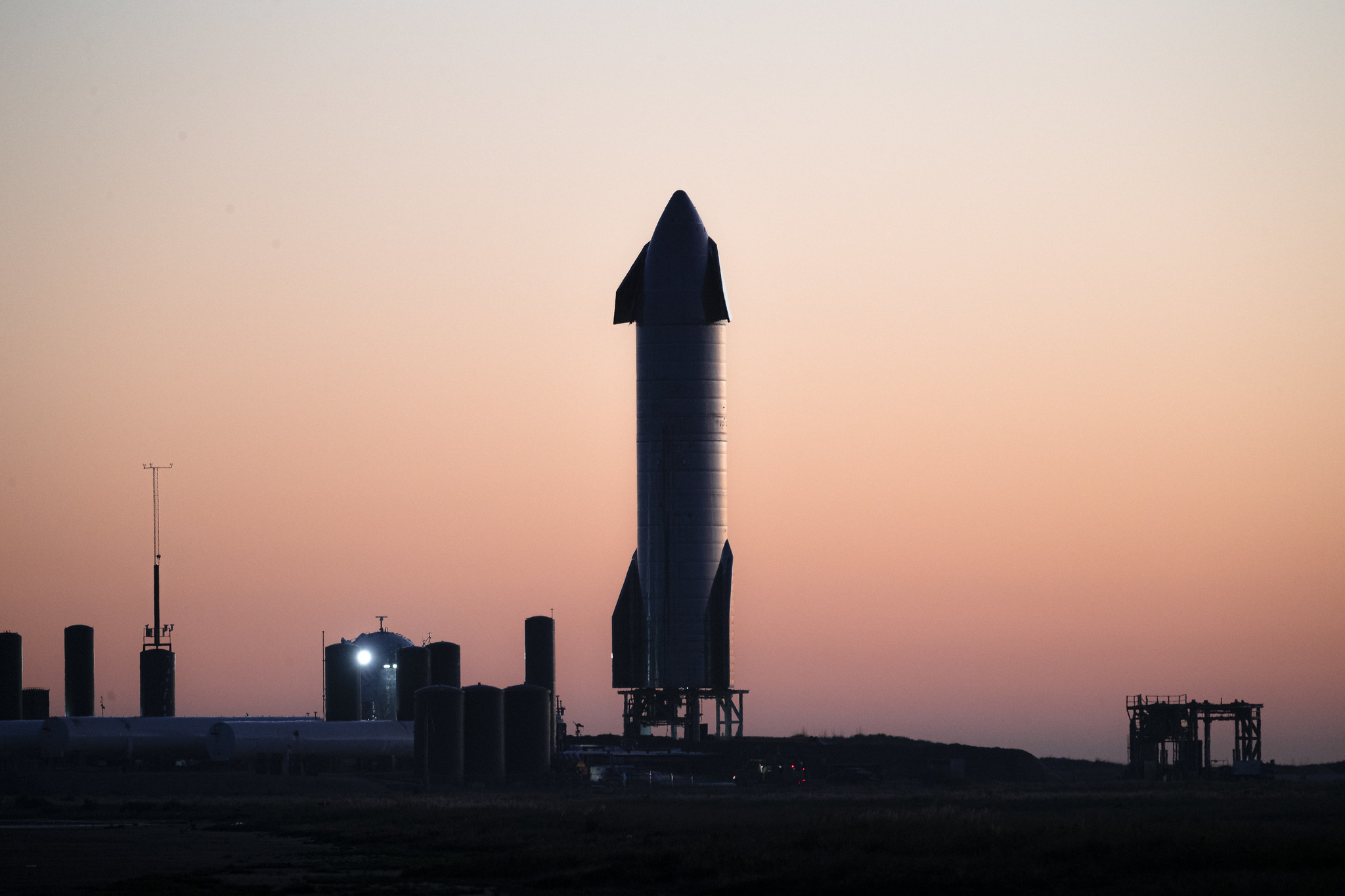Relive SpaceX's Starship SN8 test launch with this epic recap video
Watch the giant Starship launch, flip over and yes, explode.
SpaceX dropped an early Christmas present for space fans everywhere this week with an amazing video recap of its first major test launch of a Starship rocket.
The video, which SpaceX unveiled Wednesday (Dec. 23), shows the company's first high-altitude launch of its giant Starship SN8, a rocket prototype for a fully reusable space launch system for trips to the moon and Mars. SpaceX launched the Starship SN8 on Dec. 8 from a pad it its test facility near the village of Boca Chica in South Texas.
"12 story rocket turns off its engines & does a controlled fall," SpaceX CEO and founder Elon Musk wrote on Twitter.
Starship and Super Heavy: SpaceX's Mars-colonizing vehicles in images



During the Dec. 8, SpaceX's Starship SN8 launched to an altitude of about 7.8 miles (12.5 kilometers) using its three Raptor engines. At its peak, the rocket shut down its engines and performed a "belly flop" to make a controlled glide to a landing site near its launch pad.
Just before touchdown, Starship SN8 fired up one of its engines once more to flip the rocket around to attempt an upright landing similar to those regularly performed by SpaceX's Falcon 9 and Falcon Heavy boosters. But the rocket landed a bit too fast due to a lower than expected fuel tank header pressure, cause it to crash and explode in a brilliant fireball.
In the new video, SpaceX catches that moment with a camera just below the booster at the landing pad, as well as from afar. Musk and SpaceX celebrated the launch test despite the explosion, adding that the mission proved Starship's ability not only to launch on the company's new Raptor engines, but also glide itself back to Earth to a landing spot.
Get the Space.com Newsletter
Breaking space news, the latest updates on rocket launches, skywatching events and more!
"SN8 did great!" Musk wrote on Twitter on Dec. 9. "Even reaching apogee would've been great, so controlling all the way to putting the crater in the right spot was epic."
"Mars, here we come," Musk wrote later.
SpaceX expressed similar sentiments in the recap video.
"SN8 demonstrated a first-of-its-kind controlled aerodynamic descent and a landing flip maneuver," SpaceX states in the video. "Together these will enable landing where no runways exist including the moon, Mars and beyond."
Musk has said the company may save the SN8 wreckage to preserve its memory.
Indeed, NASA has tapped SpaceX's Starship vehicle as a contender for crewed moon landing missions under its Artemis program. The company's final Starship vehicle will include both the Starship spacecraft and a massive reusable booster called Super Heavy to launch deep-space missions.
SpaceX is already hard at work preparing its next Starship prototype, the SN9 rocket, for its own test launch, possibly later this month. The rocket required some extra work earlier this month after it appeared to tip slightly inside its hangar at Boca Chica, according to images captured by Starship watchers and posted on Twitter.
Sunrise with Starship SN9 at SpaceX Boca Chica launch site. 🤩🚀😍@NASASpaceflight https://t.co/lQVrVVV5nH pic.twitter.com/Vzf8aXBcoFDecember 23, 2020
But the rocket has since rolled out to to its launch pad.
"Next up: SN9," SpaceX said.
Email Tariq Malik at tmalik@space.com or follow him @tariqjmalik. Follow us @Spacedotcom, Facebook and Instagram.
Join our Space Forums to keep talking space on the latest missions, night sky and more! And if you have a news tip, correction or comment, let us know at: community@space.com.

Tariq is the Editor-in-Chief of Space.com and joined the team in 2001, first as an intern and staff writer, and later as an editor. He covers human spaceflight, exploration and space science, as well as skywatching and entertainment. He became Space.com's Managing Editor in 2009 and Editor-in-Chief in 2019. Before joining Space.com, Tariq was a staff reporter for The Los Angeles Times covering education and city beats in La Habra, Fullerton and Huntington Beach. In October 2022, Tariq received the Harry Kolcum Award for excellence in space reporting from the National Space Club Florida Committee. He is also an Eagle Scout (yes, he has the Space Exploration merit badge) and went to Space Camp four times as a kid and a fifth time as an adult. He has journalism degrees from the University of Southern California and New York University. You can find Tariq at Space.com and as the co-host to the This Week In Space podcast with space historian Rod Pyle on the TWiT network. To see his latest project, you can follow Tariq on Twitter @tariqjmalik.









